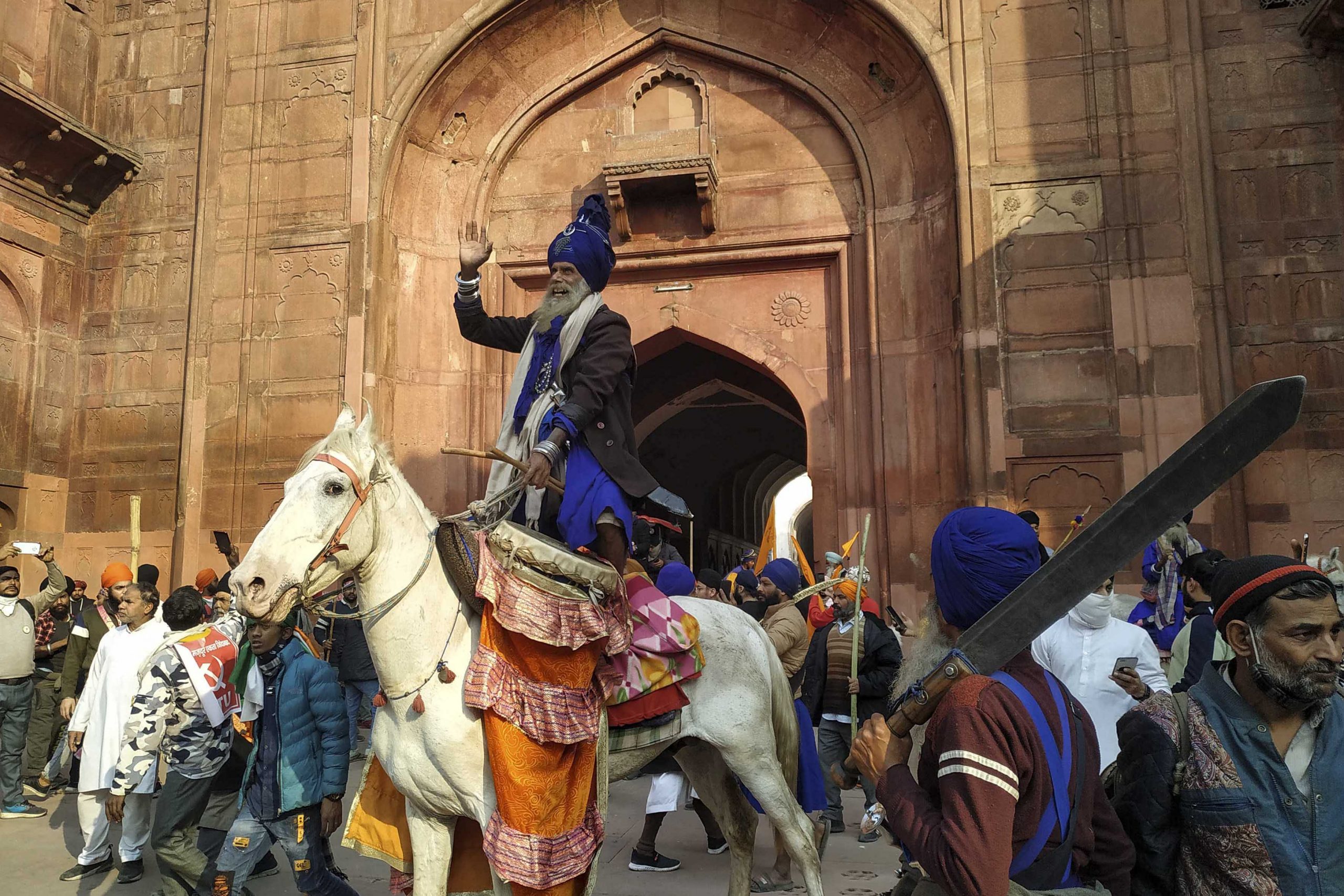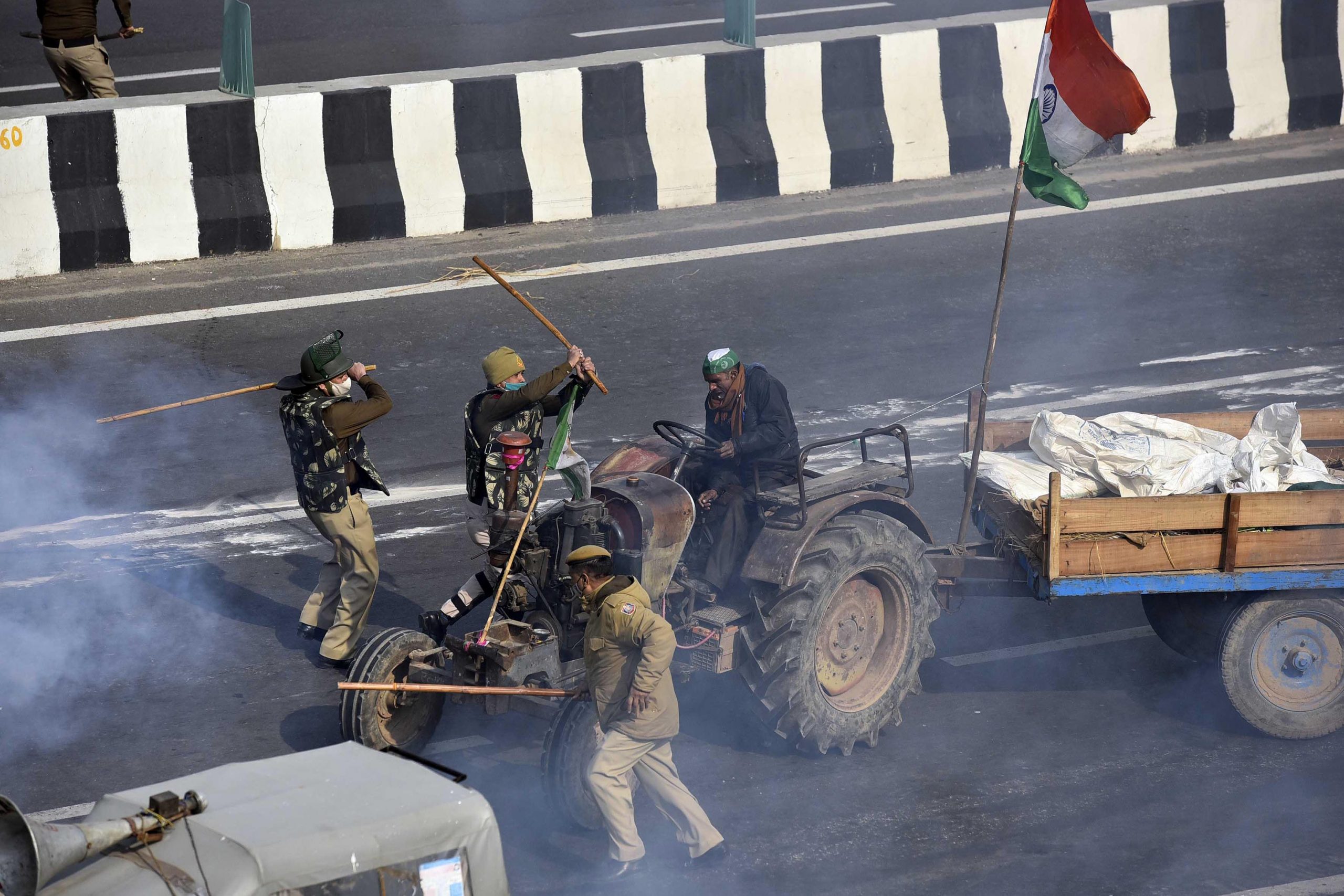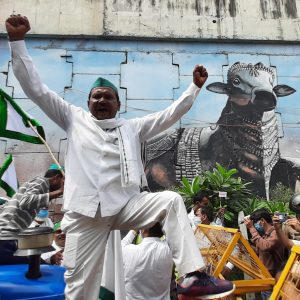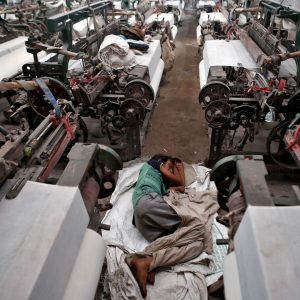Protesting farmers pose threat to Modi’s autocracy
Protests by Indian farmers against pro-corporate laws, which started in November, recently intensified, signalling fresh political resistance to the right-wing government’s rule.
Author:
29 January 2021

India is experiencing an extraordinary farmer-led movement set to have a profound impact on the country’s future. Locked in months of sustained struggle to overturn new agricultural laws, Indian farmers have seemingly begun to flex their political muscles, raising a banner of revolt against Prime Minister Narendra Modi’s right-wing government.
On the day India celebrated its 72nd Republic Day, its capital became the site of dramatic scenes as thousands of aggrieved farmers protested against Modi’s pro-corporate farm laws and signalled disapproval of his ruling dispensation. New Delhi witnessed a massive commotion after the farmers, who had been demonstrating peacefully on the outskirts of the city since November, rallied on foot, horses and tractors to reach the city centre. Farmers had previously attempted to march into New Delhi in November but were stopped by the police.
Farmers have been protesting three contentious agricultural bills passed on 20 September 2020 that loosen rules on the distribution, pricing and storing of agricultural goods, which have shielded Indian farmers from the free market for decades. While the Modi government insists these new laws empower farmers and boost growth by attracting private investment, farmers contend that the legislation threatens decades-old safeguards, weakens their bargaining power and puts them at the mercy of big agribusinesses.
Related article:
The Delhi police gave the farmers’ unions who organised the rally permission to protest along selected routes that would have confined them to the outskirts of the capital. But farmers broke through barriers to reach Delhi. Police retorted with tear gas and baton charges. Some farmers commandeered cranes and used them to tear down roadblocks, forcing police officers to give way. A 24-year-old farmer lost his life, while dozens of others, including police officers, were left injured.
Protesters – many of whom belong to the Sikh faith – converged on the historic Red Fort monument, where tensions between demonstrators and law enforcement escalated. Police charged with batons. In the ensuing chaos, demonstrators entered the monument and installed a Sikh flag alongside the national flag. The 17th-century Mughal-era complex is the site of the annual flag hoisting ceremony to mark India’s independence from British rule.

Samyukt Kisan Morcha (SKM), the farmer coalition leading the farmers’ protest, was quick to distance itself from the violence, accusing organisations and individuals of indulging in “condemnable” actions. “We have always held that peace is our biggest strength, and any violation would hurt the movement,” the farmers’ union said in a statement. Although two farmers’ unions withdrew following the incident, most other unions said they were determined to continue their protest against the new laws.
The Communist Party of India (Marxist) criticised the Modi government over the treatment meted out to protesting farmers, asserting that tear gassing and lathi [baton] charging was “unacceptable”. “Why, after the Delhi Police and Samyukt Kisan Morcha agreement? Why is the government provoking a confrontation? They must allow the peaceful, agreed tractor parade to continue,” the party’s general secretary Sitaram Yechury said in a tweet.
A symbolic insurrection
Protesting in the heart of India’s capital is a significant act of defiance on part of the country’s crisis-ridden farmers, who have been relegated to the margins of the national policy agenda and reduced to a mere voting bloc by political parties. These demonstrations bring the focus back to India’s ailing agriculture sector and pits farmers against Modi and his ruling Hindu nationalist Bharatiya Janata Party (BJP).
“On January 26, when routinely it is the state’s pomp that is usually centre stage in the capital city, for the first time it may transpire that not the state but ‘we, the people’ will truly occupy the nation’s attention, notwithstanding whatever strategies may be adopted by complicit media outlets to downplay the occurrence,” wrote Badri Raina, a Delhi-based Marxist commentator. “India seems on the cusp of witnessing an extremely instructive switch.”
Journalist Hartosh Singh Bal, writing for the New York Times, also concluded that for the first time in six years, Modi is facing opposition he has not been able to “stifle or tar” with his massive propaganda machinery. “If Mr Modi’s government is hoping that the protests will fade away, it is unlikely to happen. The farmers, having sown their wheat crops a month ago, are relatively free to pursue their agitation well past March. And they have a supply chain that will keep them fed on Delhi’s borders for as long as they care to be here,” he wrote.
Related article:
Subin Dennis, an economist at the Tricontinental Institute for Social Research, believes the Republic Day rally by farmers sent out “a powerful message to the ruling oligarchy in India” that seeks profit at the expense of the country’s farmers and workers.
Hundreds of farmers also held simultaneous marches in other parts of India against the new agriculture laws. In Maharashtra, more than 15 000 farmers walked towards Mumbai, while in the south, Karnataka’s farmers held major rallies in the state capital Bengaluru, where an estimated 5 000 people joined the tractor parade in the city. More than 1 000 farmers from eastern Indian states, including Odisha, Jharkhand, West Bengal and Chhattisgarh, are also making their way to Delhi to join the ongoing SKM protest.
Farmers’ unions had announced another foot march to Parliament on 1 February 2021 when the Indian government presents its annual budget, but following the violence was called off. The farmers are poised to persist with their demands, and the government is likely to adopt stern measures following the Republic Day fracas. Both sides seem on the precipice of a major showdown that may have long-lasting political implications.
Anti-farmer laws
Undeterred by harsh weather conditions, death threats and harassment of protest leaders by law enforcement agencies, farmers from the northern Indian states of Punjab, Uttar Pradesh and Haryana have also been demonstrating. As many as 150 protesting farmers have reportedly died in road accidents and from the cold.

The Modi government has held 11 rounds of talks with the farmers’ unions to end the protests. The government initially proposed amending the laws and then offered to suspend them for up to 18 months – both moves that show the extent of it edginess. The unions rejected both offers. On 12 January, the Supreme Court of India put a stay on the three laws and formed an expert panel, which is set to submit a report by the end of March.
Defending these laws, Modi earlier called the passing of the “reforms” a “watershed moment” for Indian agriculture. But opposition parties and farmers’ groups across the political spectrum have dubbed the changes “anti-farmer” and expressed concern that they could corporatise agriculture and dilute the system of government procurement at guaranteed prices.
Modi’s crony capitalism
Agriculture employs over half of India’s 1.3 billion inhabitants, and more than half of farmers are in debt. The palpably worried Modi government now finds itself pitted against an estimated 150 million discontent farmers.
Since returning to power for a second term, Modi’s government has been accused of rushing legislation, including the three agriculture laws, through Parliament with its majority, with minimal consultation and using the Covid-19 pandemic to bypass public scrutiny and speed up the implementation process. “[Modi’s] government has repeatedly relied on ordinances to skip a more consultative legislative process and in this case was also seeking to use technicalities and avoid working with the states, in what some called ‘bypass reform’,” wrote Delhi-based journalist Rohan Venkataramakrishnan.
In a scathing indictment of Modi’s pro-corporate policies, The Guardian outlined the growing backlash against Modi’s autocratic leadership, which is driven by the plutocrat donors who fund his party. Arguing that a country like India needs politicians who want to diversify its agricultural base, expand welfare and create industries that offer jobs to those displaced from land, the editorial stated: “This requires a government interested in ordinary people, not just corporate profits that disproportionately fund Mr Modi’s party. If those left behind by economic change conclude that those in power are not bothered about their plight – or have rigged the system in favour of the better-off – there will be trouble.”
Related article:
Sharing a similar view, Rahul Gandhi, leader of the principal opposition Indian National Congress, also criticised the Modi government for “attacking” the farmers and “destroying” the country’s agrarian economy with his pro-market policies. “He has brought three new laws which are going to destroy Indian agriculture, and hand it over to two to three big industrialists… One of the laws clearly states that farmers can’t go to court to protect themselves,” he told a rally in the southern Indian state of Tamil Nadu.
Anthropologist Aniket Aga, who teaches environmental studies at Ashoka University, also pointed out that the new farm laws intrude upon the regulatory powers of state governments and intensify the already severe power asymmetry between corporates and Indian farmers, 86% of whom cultivate less than two hectares. “Clauses like one that bars farmers – or anyone else – from seeking legal recourse over contractual disputes cement the fear that the laws stack the deck against farmers,” he explained.
The standoff between the farmers and the BJP-led government, Aga further contended, is not just about the repeal of the laws, but is also about “writing the obituary” of India’s Green Revolution that effectively promoted capital-intensive industrial agriculture.




